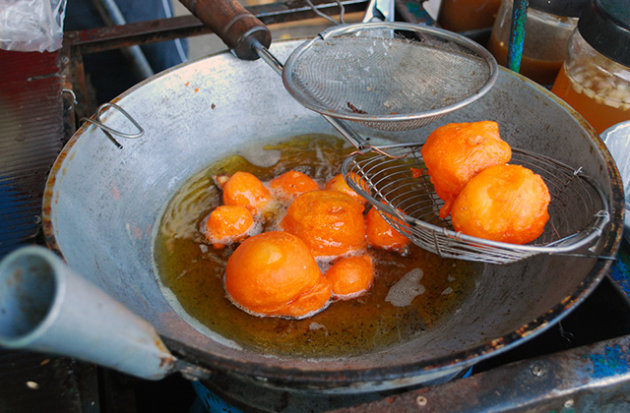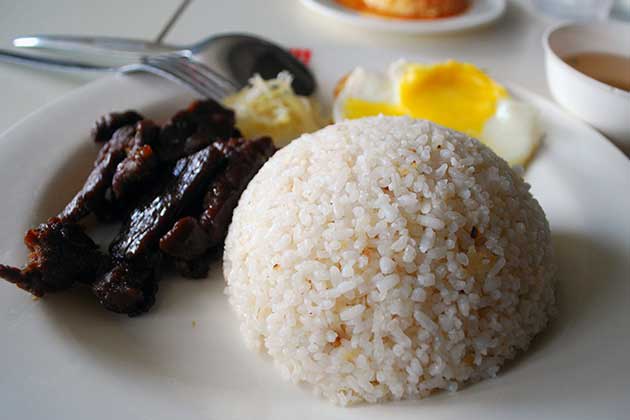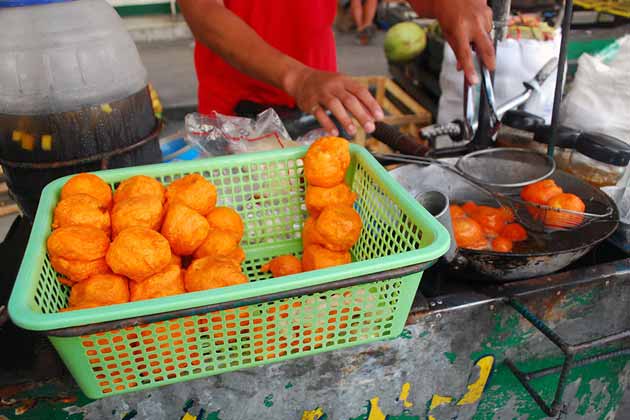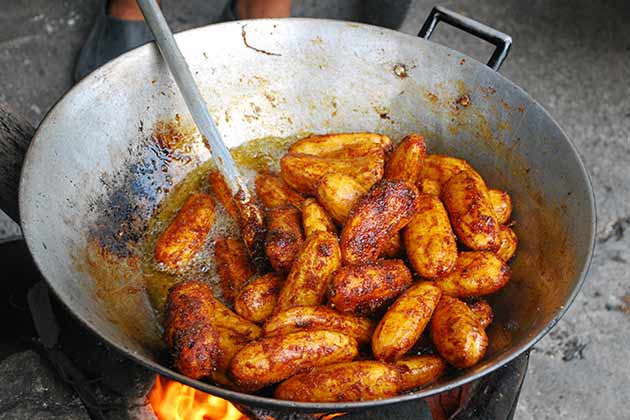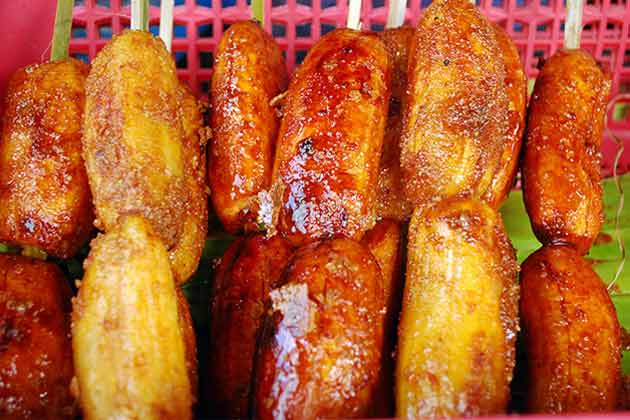Pity the dieter who swears off all fried foods for health-related reasons; not only does she cross out the most delicious constituents of any menu, she excludes herself from the best parts of the Filipino food experience, too. Begone, banana-cue and turon. So long, tapsilog and tosilog. Goodbye, kentekoy and kwek-kwek.
If you're Pinoy, you're likely to start your morning with something fried and continue in like fashion throughout the day. We take comfort in food that's been seared in oil, whether it's a tocino and egg at sunrise or sizzling sisig post-five-thirsty over beer with friends. It's all very natural to any Filipino, at least until heart disease catches up with us.
Frying: a Gift from ChinaYou'd be surprised, then, to learn that frying is a relative latecomer to our tables. Before the Chinese came to the Philippines to trade, the Filipino food repertoire was limited to boiling, roasting, and souring — in short, what we could make with what we had at the time, in that dark time before our Eastern brothers gifted us with the wok and the syanse.
It must have seemed like a gift from the gods, when the medieval equivalent of Wok with Yanpremiered in Filipino trading towns and introduced our pre-colonial forefathers to the glories of sizzling-hot oil. Boiling and roasting take ages to cook properly; it takes comparatively little time to heat oil to the desired temperature before you throw in the food to fry.
Hot oil sears food in a snap, caramelizing sugars and crisping exposed surfaces. And oil adheres to the food, adding oomph to the flavor and mouth feel.
A Stir-Fry to Start Your Day
Rice, for example, experiences a second life in the frying pan, regaining freshness and flavor with salt, garlic, and a few minutes of stir-frying. Yesterday's rice need never go to waste, so long as it can be resurrected as that staple of early mornings, sinangag, the "si" in tapsilog, tosilog, ad nauseam.
Rice, for example, experiences a second life in the frying pan, regaining freshness and flavor with salt, garlic, and a few minutes of stir-frying. Yesterday's rice need never go to waste, so long as it can be resurrected as that staple of early mornings, sinangag, the "si" in tapsilog, tosilog, ad nauseam.
We've covered the different "silogs" here in Timpla before (Sensational 'Silog' and Where To Find The Best 'Silog'?); in any case, it's likely you're no stranger to the magic that can be wrought when stir-fried rice teams up with your protein of choice and eggs sunny-side up. It's not fancy — it's irredeemably para sa masa, but do we want our tapsilog any other way?
Simmering Street FoodStreet food benefits greatly from the speed and ease afforded by frying. No Manila street corner would be complete without a fishball vendor standing guard, deep-frying balls of seafood-flavored dough for call center agents and cigarette sellers alike.
If you're lucky, manong fishball's repertoire will include deep-fried duck and quail eggs coated in orange-colored batter. The name of the vendor who invented kwek-kwek and kentekoy's trademark orange batter is lost to history, but our stomachs (and arteries) will never forget his work.
Nor are we likely to forget what happens when you deep-fry saba and sugar — the sugar caramelizes into a shell around the saba, which tenderizes from the heat. Add bamboo skewers and you get banana-cue, that sweet street-food standby.
Fried food has made life easier, and improved the culinary experience overall. The next time you bite into that kentekoy or start your day with tosilog, say a silent word of thanks to the unnamed cook who first put raw food and hot oil together. Frying is something to celebrate… even if your cardiologist thinks otherwise.



